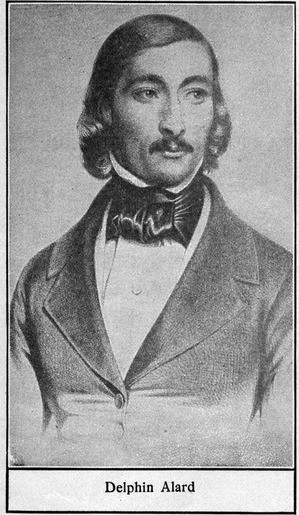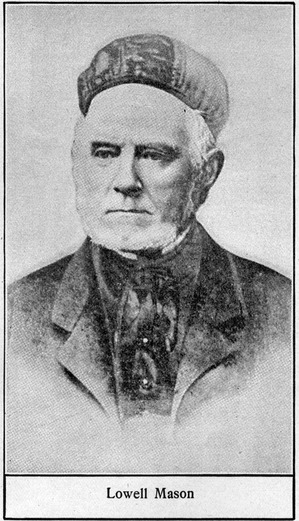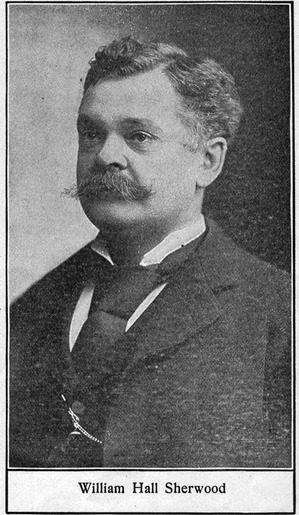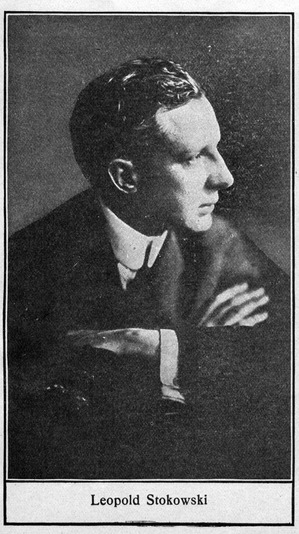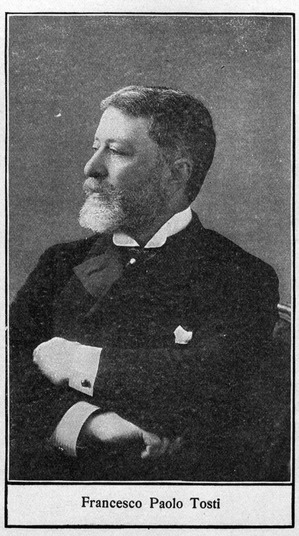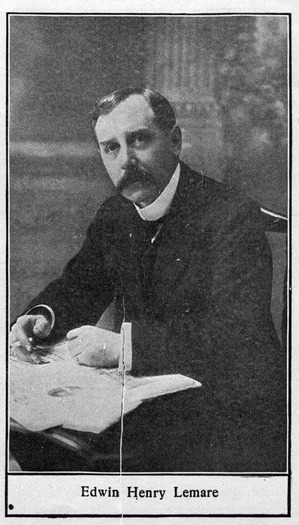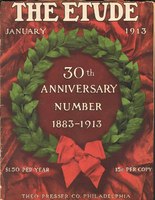Special Notice to Etude Readers
During the past four years THE ETUDE has presented, in its original feature page, "The Gallery of Musical Celebrities," over two hundred and fifty portrait biographies of famous musicians of the past and present, making the most comprehensive collection of its kind in existence. When possible we shall present other gallery pages occasionally. The successor to the gallery is "The Master Study Page," which our readers will find in many ways even more useful than the gallery itself.
Alard was born at Bayonne, France, March 8, 1815, and died in Paris, February 22, 1888. He showed great musical ability at an early age, and was sent to Paris in 1827. He attended Habeneck's class at the Conservatory, soon winning the second and, a year later, the first prizes for violin playing. His professional career commenced in 1831, and he soon established a great reputation. On the death of Baillot, Alard succeeded to the post of professor of violin playing at the Conservatoire, remaining there from 1843 until his death. Grove's dictionary says that Alard was "the foremost representative of the modern French school of violin playing at Paris with its characteristic merits and drawbacks. His style was eminently lively, pointed, full of élan." He published many works of a brilliant but somewhat superficial kind, though many of his works are still popular on account of the opportunity they give for technical display. He made many transcriptions of operas such as The Barber of Seville, Norma, Sonnambula, and Faust, besides writing original pieces such as Brindisi Waltz. His Violin School, however, is very comprehensive and has won wide recognition on account of its many valuable qualities. It is therefore as an educator that Alard has earned his place in the regard of violinists.
Lowell Mason was born at Medfield, Mass., January 24, 1792, and died at Orange, N. J., August 11, 1872. He was self-taught, and in earlier years attempted to play many instruments as well as to sing in the village choir. When twenty years old he became a bank clerk in Savannah, Ga. While there he compiled a number of hymn tunes from the works of the classic masters. This collection was subsequently adopted by the Handel and Haydn Society, and its success resulted in Mason being called to Boston in 1827. He became president of the Society, but soon resigned in order to develop his project to get music introduced as an essential element of education in the schools. He founded classes which he taught after the system of Pestalozzi, and eventually succeeded in obtaining power to teach in all the public schools of Boston. He was the first to bring music teachers of America together in conventions similar to those now held in many parts of the country. Lowell Mason published a large number of manuals and collections of tunes for public use, etc. His first visit to Europe was in 1837, when he went to Germany to study the educational methods then in vogue. His impressions were published in a volume entitled Musical Letters from Abroad. Mason was universally loved by all who knew him, and did perhaps more than any other American to popularize music in this country. His son, William Mason, was almost equally famous.
Sherwood was born at Lyons, N. Y., January 31, 1854, and died at Chicago, January 7, 1911. He studied first with his father and with Heimburger, Pychowski, and Dr. William Mason. He then spent five years in Europe under Theodor Kullak, Weitzmann, Wurst, and Deppe in Berlin; Richter in Leipzig; Scotson Clark and Karl Doppler in Stuttgart; and finally with Franz Liszt in Weimar. Upon returning to this country he quickly became famous as a virtuoso pianist and was heard in all the leading cities. He settled as a teacher at the New England Conservatory in Boston, but later went to New York. In 1888, however, he moved to Chicago, where he subsequently founded the Sherwood Piano School. His work as a teacher no less than as a concert pianist has been of immense value to the growth of musical interest in America. Sherwood never spared himself and was a man of immense energy. He has composed some excellent piano music, the best known of his works being, perhaps, the playful Buy a Broom, based on an old German folk song. Among others are his Suite of five pieces, two mazurkas, scherzos and a Romanza Appasionata. Sherwood also contributed valuable articles on musical education to The Etude.
(Sto-kovs'-ke).
Stokowski was born in London, 1882, and is the son of a Polish father and Irish mother. His early musical training was at the Royal College of Organists, and after graduating he became a pupil of Parry, Stanford, and others in composition. At the age of fourteen a prize work of his was performed at St. Paul's Cathedral by a chorus of four hundred voices. Stokowski is an excellent pianist, a violinist, and is able also to play various other orchestral instruments. Though he graduated at Oxford University, he has spent much time on the continent, especially in Munich, where he owns a home. He has held two important organ positions—at St. James', Piccadilly, London, and St. Bartholomew's, New York—but his greatest musical interest is the orchestra. After leaving St. Bartholomew's, he became "guest" conductor with various important orchestras in London and Paris, and speedily attracted the attention of the managers of the Cincinnati Orchestra. His subsequent success with the Cincinnati Orchestra attracted wide attention, and as his retirement from that organization coincided with that of Carl Pohlig from the Philadelphia Orchestra, he was promptly secured for the vacant position. His conducting is virile and temperamental, but none the less dignified, revealing a charming and sincere personality.
Tosti was born April 9, 1846, at Ortona sur mare, Italy. He studied music in Naples at the Royal School of St. Pietro a Majella under Pinto (violin), Conti and the aged Mercadante (composition). He made such rapid progress that he was made a pupil teacher at the munificent salary of 60 lire ($12) a month. He remained there until his health broke down and he was forced to return to Ortona. During his illness he wrote songs, but found great difficulty in securing a publisher for them. Upon his recovery he went to Rome, where he met with the sympathy and encouragement of Sgambati. Through the aid of his new friend Tosti became teacher of singing to the Queen of Italy, and shortly afterwards became curator of the Musical Archives of the Italian Court. He first visited London in 1875, and in 1880 was appointed teacher of singing to the Royal Family of England. Since then he has resided in the British capital, where he is such a favorite that he was knighted in 1908. He has written many beautiful songs which have become very popular, a few of the best known being Goodbye Beauty's Eyes, Forever and Forever, Mattinata, Venetian Song, and Could I. The last named is said to have been a great favorite of Queen Victoria's.
Lemare was born at Ventnor, Isle of Wight, England, September 9, 1865. He won the Goss scholarship to the Royal Academy of Music in 1878 and subsequently became a Fellow of that institution and was also appointed, in 1884, a Fellow of the Royal College of Organists. He held various important organ appointments, but while at Holy Trinity Church, Sloane Street, London, and at St. Margaret's, Westminster, became so famous as a concert organist that he gave up church work. He not only possesses rare gifts as an interpreter of "legitimate" organ music, but is also specially noted for his organ adaptations of orchestral works. He has visited this country several times, and in 1902 was appointed organist at Carnegie Hall, Pittsburgh, but after two years returned to England. He has also visited Australia. Lemare's compositions include some important contributions to the higher branches of organ music and a large number of remarkably beautiful pieces in the smaller forms. Some of the best known of the shorter works are Andantino in D flat Marche Moderne, Spring Song, Berceuse, Pastorale in E, Elegy, Gavotte Moderne, Romance in D flat, and the interesting Reverie which is in 5-4 rhythm. His published organ transcriptions are also numerous, and a good example is the arrangement of Chopin's E flat Nocturne.


